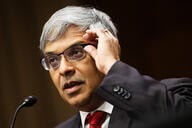You have /5 articles left.
Sign up for a free account or log in.
A growing number of universities are lowering the rates of return they expect to earn on their endowments, which could be paired with other important decisions on endowment spending policies, investment strategies and fund-raising demands, according to Moody’s Investors Service.
More and more universities are dropping their assumed nominal endowment returns to a range of 6 percent to 7 percent, Moody’s said in a report Friday. In the past, universities have typically assumed returns of 8 percent to 9 percent when crafting their spending plans.
That is changing as average endowment returns have fallen substantially below levels needed to keep up universities’ standard endowment spending rate, widely considered to be 5 percent. Over the last decade, endowments have posted an average annual return rate of 5 percent. After inflation is factored in, that would mean a 5 percent spending rate would create a shortfall of 2 percent to 2.5 percent, driving down endowment values over time, Moody’s said.
As a result of the crunch, universities could choose to reduce their annual spending levels. Some are gradually cutting spending to the 4.5 percent to 5 percent range, according to Moody’s. However, large reductions are unlikely in a current climate of political scrutiny that has included Congress making noise about taxing large endowments at colleges and universities that do not spend substantial amounts on student financial aid.
Colleges and universities could also choose to pursue strategies like moving to passive management to try to match market returns. Such a strategy would likely limit their possibility of outperforming the market, though.
Others might take on increasing risk. Some colleges and universities may turn to fund-raising and retained cash flow to shore up their long-term endowment returns.
As a result, the wealthiest universities would appear to have the most potential for future endowment health. Such universities tend to disproportionately benefit from fund-raising and cash flow because they have wealthy donors and strong brands commanding more money. They also tend to have the endowment size and flexibility required to invest in the alternative and riskier assets that could yield the highest returns.




